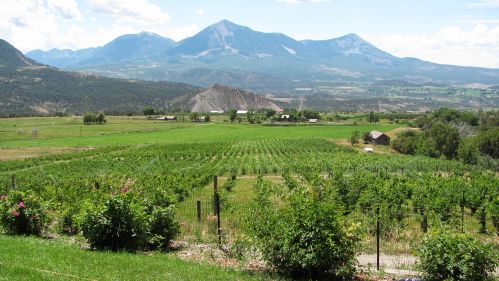
U.S. Senate
See Full Big Line
(D) J. Hickenlooper*
(R) Somebody
80%
20%

Governor
See Full Big Line
(D) Joe Neguse
(D) Phil Weiser
(D) Jena Griswold
60%
60%
40%↓

Att. General
See Full Big Line
(D) M. Dougherty
(D) Alexis King
(D) Brian Mason
40%
40%
30%

Sec. of State
See Full Big Line
(D) George Stern
(D) A. Gonzalez
(R) Sheri Davis
40%
40%
30%

State Treasurer
See Full Big Line
(D) Brianna Titone
(R) Kevin Grantham
(D) Jerry DiTullio
60%
30%
20%

CO-01 (Denver)
See Full Big Line
(D) Diana DeGette*
(R) Somebody
90%
2%

CO-02 (Boulder-ish)
See Full Big Line
(D) Joe Neguse*
(R) Somebody
90%
2%

CO-03 (West & Southern CO)
See Full Big Line
(R) Jeff Hurd*
(D) Somebody
80%
40%

CO-04 (Northeast-ish Colorado)
See Full Big Line
(R) Lauren Boebert*
(D) Somebody
90%
10%

CO-05 (Colorado Springs)
See Full Big Line
(R) Jeff Crank*
(D) Somebody
80%
20%

CO-06 (Aurora)
See Full Big Line
(D) Jason Crow*
(R) Somebody
90%
10%

CO-07 (Jefferson County)
See Full Big Line
(D) B. Pettersen*
(R) Somebody
90%
10%

CO-08 (Northern Colo.)
See Full Big Line
(R) Gabe Evans*
(D) Yadira Caraveo
(D) Joe Salazar
50%
40%
40%

State Senate Majority
See Full Big Line
DEMOCRATS
REPUBLICANS
80%
20%

State House Majority
See Full Big Line
DEMOCRATS
REPUBLICANS
95%
5%
 June 24, 2015 10:41 AM UTC
June 24, 2015 10:41 AM UTC 1 Comments
1 Comments Like a number of communities in Colorado, the valley where I live has been engaged in an effort to constrain oil and gas development to keep it out of our water supplies, our favorite recreational areas, our towns, farms and communities.
Like a number of communities in Colorado, the valley where I live has been engaged in an effort to constrain oil and gas development to keep it out of our water supplies, our favorite recreational areas, our towns, farms and communities. 

 Methane, the primary component of natural gas, is
Methane, the primary component of natural gas, is  And this is where BLM needs to step in. Currently, there are almost no federal limits on the amount of waste and methane pollution from public lands oil and gas operations, but the BLM will release proposed rules this summer to address the issue.
And this is where BLM needs to step in. Currently, there are almost no federal limits on the amount of waste and methane pollution from public lands oil and gas operations, but the BLM will release proposed rules this summer to address the issue. As communities like my own try to protect our valley’s public lands, our developing economy as
As communities like my own try to protect our valley’s public lands, our developing economy as
Again, great writing, PK. I went to a "Gas & Oil 101" meeting put on by Coga in Longmont last night. They were really nice people presenting there, but seemed utterly baffled by my request about a comprehensive GIS mapping of communities, with drilling and tank locations and air pollution data.
These all exist in separate places, but not together. The air data has been compiled by NASA flyovers, is my understanding, but nobody's putting it together in an accessible format, so that, say a 7th grader who loves to screw around on Google Earth could pull up his neighborhood, look at who's drilling in the vicinity, and then pull up another layer and see how much methane, volatiles, etc are showing up.
That's what needs to happen. It's so fricking overwhelming, all the little pieces, that we really need something like a giant public Google Earth map so that ordinary people can get their minds around what's happening. Is anybody working on that?
I can tell you that the government and industry reps at last night's meet n greet are not.